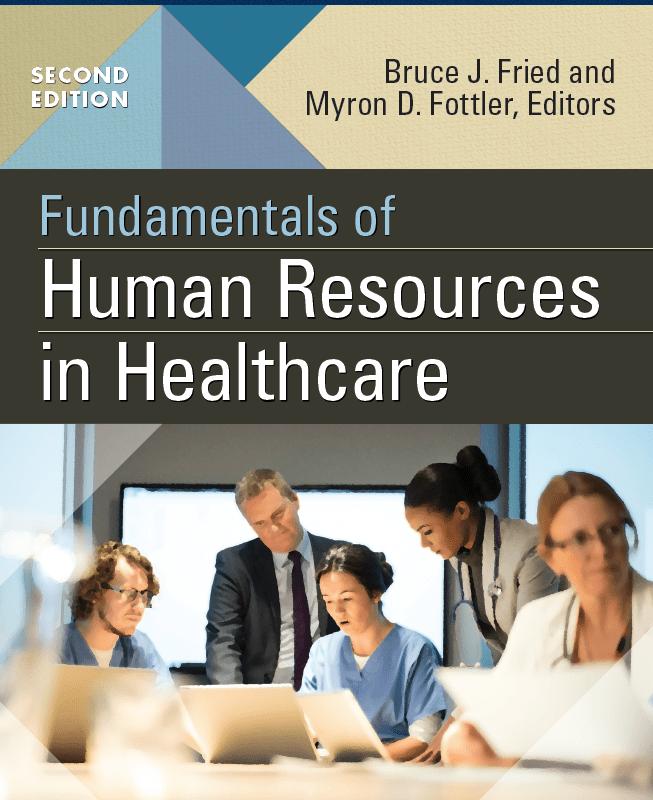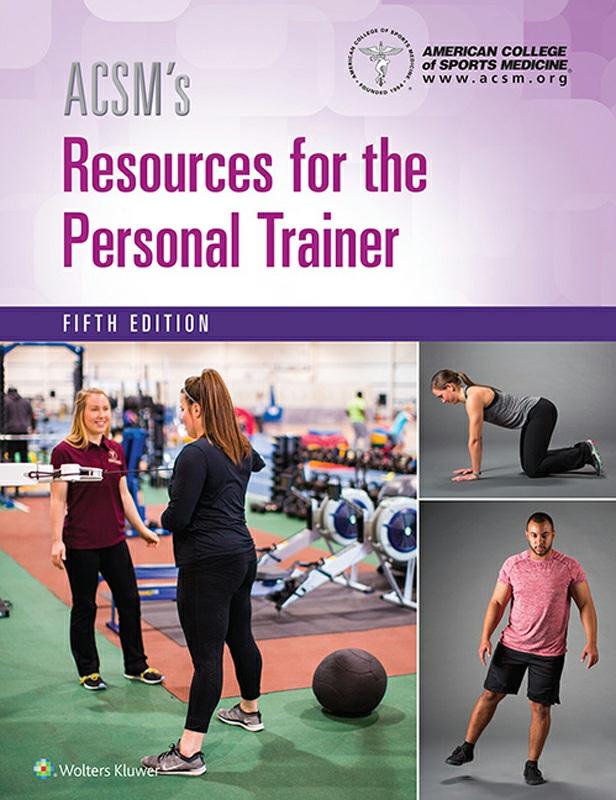Edition, (Ebook PDF)
Visit to download the full and correct content document: https://ebookmass.com/product/acsms-resources-for-the-personal-trainer-5th-editionebook-pdf/

More products digital (pdf, epub, mobi) instant download maybe you interests ...

Becoming a Personal Trainer For Dummies, 2nd Edition
Shannon Austin
https://ebookmass.com/product/becoming-a-personal-trainer-fordummies-2nd-edition-shannon-austin/

Metacognitive Translator Training: Focus on Personal Resources
Paulina Pietrzak
https://ebookmass.com/product/metacognitive-translator-trainingfocus-on-personal-resources-paulina-pietrzak/


ACSM’s Resources for the Exercise Physiologist 2nd Edition, (Ebook PDF)
https://ebookmass.com/product/acsms-resources-for-the-exercisephysiologist-2nd-edition-ebook-pdf/ (eTextbook PDF) for Fundamentals of Human Resources in Healthcare, Second Edition
https://ebookmass.com/product/etextbook-pdf-for-fundamentals-ofhuman-resources-in-healthcare-second-edition/

(eTextbook PDF) for Personal Nutrition 10th Edition by
Marie A. Boyle
https://ebookmass.com/product/etextbook-pdf-for-personalnutrition-10th-edition-by-marie-a-boyle/

Personal Nutrition 10th Edition, (Ebook PDF)
https://ebookmass.com/product/personal-nutrition-10th-editionebook-pdf/

Personal Finance 12th Edition, (Ebook PDF)
https://ebookmass.com/product/personal-finance-12th-editionebook-pdf/

Water Resources Engineering 3rd Edition, (Ebook PDF)
https://ebookmass.com/product/water-resources-engineering-3rdedition-ebook-pdf/

Managing Human Resources 17th Edition, (Ebook PDF)
https://ebookmass.com/product/managing-human-resources-17thedition-ebook-pdf/

indicationsanddosageandforaddedwarningsandprecautions.Thisis particularlyimportantwhentherecommendedagentisaneworinfrequently employeddrug.
SomedrugsandmedicaldevicespresentedinthispublicationhaveFoodand DrugAdministration(FDA)clearanceforlimiteduseinrestrictedresearch settings.Itistheresponsibilityofthehealthcareprovidertoascertainthe FDAstatusofeachdrugordeviceplannedforuseintheirclinicalpractice.

Preface
AdditionalResources
Thisfiftheditionof ACSM’s Resources for the Personal Trainer represents anotherstepforwardfromthepreviouseditionandisbasedon ACSM’s Guidelines for Exercise Testing and Prescription, 10th edition.Inthisfifth edition,theeditorsandcontributorshavecontinuedtorespondtotheneedsof practicingPersonalTrainers.Thiseditionhasexpandeduponthefourth editioninthatcontentwasupdatedwiththelatestscientificevidence, preparticipationscreeningrecommendationswererevisedtoreflectnew guidelinesforparticipatinginphysicalactivity,andanewchapteron functionalmovementwasadded.
Overview
ACSM’s Resources for the Personal Trainer, 5th edition,continuesto recognizethePersonalTrainerasaprofessionalinthecontinuumofcreating healthylifestyles.ThistextprovidesthePersonalTrainerwithboththetools andscientificevidencetohelpbuildsafeandeffectiveexerciseprogramsfor avarietyofclients.Thebookisdividedintosixdistinctlydifferentparts, rangingfromanintroductiontotheprofessionofpersonaltrainingto considerationsofhowtorunyourownbusiness.Inbetweenarechapters dedicatedtothefoundationsofexercisesciencewhichincludeanatomy, exercisephysiology,biomechanics,behaviormodification,andnutrition.The science-andevidence-basedapproachprovidesawayforthetransferof knowledgefromthePersonalTrainertotheclient,allowingforthe opportunityforsuccessfromabusinessstandpoint,aswellasforthe
individualclients.Themiddlechaptersincludeestablishinggoalsand objectivesforclientsanda“how-to”manualforpreparticipationscreening guidelinesaswellasassessingbodycomposition,cardiovascularfitness, muscularfitness,andflexibility.Thelastsectionsofchaptersarededicatedto developingvarioustrainingprograms,addressingspecialpopulationsand advancedtrainingprogramoptions,andprovidingthebasicsonbusinessand legalconcernsfacingPersonalTrainers.
Organization
Thechaptersaredividedintosixpartsdesignedforeaseofnavigation throughoutthetext.Usingthisapproach,usefulnesswillbemaximizedfor everyPersonalTrainer.
PartI:IntroductiontotheFieldandProfessionofPersonalTraining.
Twointroductorychaptersaredesignedtointroducethenewandaspiring PersonalTrainertotheprofession.Chapter1providesinsightintowhythe healthandfitnessprofessionsaresomeofthefastestgrowingindustriesin theworldandhowthePersonalTrainercancapitalizeonthisgrowth. Chapter2providesacareertrackforthePersonalTrainer,helping prospectivePersonalTrainerstoexaminetheirowninterestinpersonal trainingandhowtomakepersonaltrainingaviablecareer.
PartII:TheScienceofPersonalTraining.
InPartII,Chapters3–6provide thescientificfoundationsforpersonaltraining.EveryPersonalTrainer, regardlessofexperience,willfindthesechaptershelpful.ForthePersonal Trainerjuststartingout,thesechaptersintroducethescientificbasisfor physicalactivity.FortheadvancedPersonalTrainer,thesechaptersserveasa foundationalresourceforspecificlifestylemodificationprograms.Thesefour chaptersincludeanatomyandkinesiology,appliedbiomechanics,exercise physiology,andnutrition.
PartIII:BehaviorModification.
Thenextsectionofthisbookisdedicated tolearninghowandwhypeopleareeitherwillingorunwillingtochange theirbehavior.Oneofthemostfrustratingaspectsofpersonaltrainingis
whenaclientrefusestochangeadeleterioushabitoreven“cheats”between trainingsessions.Chapters7–9includediscussionsoftheconceptof “coaching” anewwayoflookingatandcreatingyourrelationshipwitha client.Thesechapterswillforeverchangeyourapproachtopersonaltraining.
PartIV:InitialClientScreening.PartIVcomprisesChapters10,11,and 12andwalksthePersonalTrainerthroughthefirstclientmeetingtoa comprehensivehealth-relatedphysicalfitnessassessment.Capitalizingonthe learningobjectivesofPartIII,thissectionestablishesaframeworkfor developingclient-centeredgoalsandobjectives.Thoughcertainlynotan exhaustivelistofphysicalfitnessassessments,Chapter12providescritical techniquestoevaluateaclientbothinthefieldandinthelaboratory.This sectionincludesmanytables,figures,andcasestudiesthatwillassistwith placingclientsintovariousfitnesscategories.
PartV:DevelopingtheExerciseProgram.
Chapter13introducesthe conceptofdevelopingacomprehensiveexerciseprogram.Onthebasisofthe goalsestablishedbytheclientandthePersonalTrainer,Chapters14–16 (resistancetraining,cardiorespiratory,andflexibilityprograms,respectively) arespecific“how-to”manuals.Newtothisbook,Chapter17presents informationregardingfunctionalmovementassessmentsandprogramming. Chapter18isdedicatedtothepropersequencingofexerciseswithinagiven personaltrainingsession,whereasChapter19hasbeenwrittenforthe PersonalTrainerwhoworkswithindividualswhodesiremoreadvanced trainingoptions.Finally,Chapter20providesexpandedcoverageabout workingwithclientswithspecialhealthormedicalconditions.Asmore peopledecidethatbeingactiveisagoodthing,PersonalTrainerswill encounterthesespecialpopulations.Thischapteralsodiscussesthescopeof aPersonalTrainer’sknowledge,skills,andabilitieswhenitcomesto workingwiththese“specialpopulations.”
PartVI:TheBusinessofPersonalTraining.Althoughseeingclients improveisrewarding,onegoalofasuccessfulbusinessistobeprofitable financially.Chapters21and22introducetheprofessionalPersonalTrainerto commonbusinesspracticesandprovideinformationabouthowtoavoid
someofthecommonmistakesbeginnerstypicallymakeinthedevelopment oftheirpractices.Chapter22dealsspecificallywithlegalissues.Writtenbya practicingattorneywithyearsofexperiencelitigatingcourtcases,this chapterencourageseachPersonalTrainertotaketheirresponsibility seriouslybygettingthenecessarytrainingandexperience.
Features
SpecificelementswithinthechapterswillappealtothePersonalTrainer.A listofobjectivesprecedeseachchapter.Keypointshighlightimportant conceptsaddressedinthetextandboxesexpandonmaterialpresented.Case Studiespresentcommonscenariosthatallowforapplicationofconcepts coveredwithinthechapters.Iconsareprovidedinselectedchaptersdirecting thereadertovaluablevideosfoundatthepoint.lww.com/ACSMRPT5e. Numerousfour-colortables,figures,andphotographswillhelpthePersonal Trainerunderstandthewrittenmaterial.Achaptersummaryconcisely wrapsupthecontent,andreferencesareprovidedattheconclusionofeach chapterforeasyaccesstotheevidence.
AdditionalResources
ACSM’s Resources for the Personal Trainer, Fifth Edition,includes additionalresourcesforstudentsandinstructorsthatareavailableonthe book’scompanionwebsiteathttp://thepoint.lww.com/activate.Seetheinside frontcoverofthistextformoredetails,includingthepasscodeyouwillneed togainaccesstothewebsite.Anyupdatesmadeinthiseditionofthebook priortothepublicationofthenexteditioncanbeaccessedat http://certification.acsm.org/updates.
Students
Videoclips
Instructors
Approvedadoptinginstructorswillbegivenaccesstothefollowing
additionalresources:
Brownstonetestgenerator
PowerPointpresentations
Imagebank
Lessonplans
Moodle/Angel/Blackboard-readycartridges

Acknowledgments
Thefiftheditionof ACSM’s Resources for the Personal Trainer continuesto buildonpreviouseditionstomakeitanall-encompassingresourcefor PersonalTrainers.Aswiththepreviouseditionsofthistext,withoutthe manyvolunteercontributorswhowrotethechapters,thistextwouldnotbe theresourceithasbecome.Additionally,theeditorswouldliketothankthe manydedicatedreviewerswhoalsovolunteeredtheirtimetocarefullyreview eachchaptertoensurethecontentwascurrentandestablishedguidelines wereaccuratelypresented.Thistextisatrueteameffortofvolunteereditors, contributors,andreviewers.
ThankyoutothestaffattheAmericanCollegeofSportsMedicine (ACSM),specificallytheEditorialServices,Publications,andMarketing departmentsfortheirsupportandassistance.ThestaffatACSMwork tirelesslytomakeprojectslikethishappenandensureconsistencyamongall ACSM-relatedpublications.
Personally,IwouldliketothankAngieChastainandKatieFeltmanfor theunderstanding,constantsupport,andencouragementtheyhaveprovided forthepast3years,thisyearinparticular.Thankyoutotheassociateeditors thatcontributedhoursoftheirtimetoimprovingthisedition.
Andlast,butcertainlynotleast,thankyoutothemanydedicatedPersonal Trainersthatmakethisworksorewarding.Wewishyoucontinuedsuccessin acareerthathassuchadirectinfluenceonthehealthofothers.
RebeccaA.Battista MindyMayol TrentHargens

Contributors*
BrentA.Alvar,PhD,FACSM
RockyMountainUniversityofHealthProfessions
Provo,Utah
Chapter 14
DanBenardot,PhD,DHC,RD,FACSM
GeorgiaStateUniversity
Atlanta,Georgia
Chapter 6
BarbaraA.Bushman,PhD,FACSM,ACSMPD,ACSMCEP,ACSM
EP-C,ACSMCPT
MissouriStateUniversity
Springfield,Missouri
Chapter 13
KathyCampbell,EdD,FACSM
ArizonaStateUniversity
Phoenix,Arizona
Chapter 15
MarissaE.Carraway,PhD
EastCarolinaUniversity
Greenville,NorthCarolina
Chapter 7
CarolN.Cole,MS,ACSMHFD,ACSMEIM2
SinclairCommunityCollege
Dayton,Ohio
Chapter 21
LanceDalleck,PhD
TheUniversityofAuckland
Auckland,NewZealand
Chapter 20
EmilyK.DiNatale,PhD
SinclairCommunityCollege
Dayton,Ohio
Chapter 7
DanaeDinkel,PhD
UniversityofNebraskaMedicalCenter
Omaha,Nebraska
Chapter 8
AylaDonlin,EdD,ACSMCPT,ACSMEIM1
CaliforniaStateUniversity,LongBeach
LongBeach,California
Chapter 16
JulieJ.Downing,PhD,FACSM,ACSMHFD,ACSMCPT
CentralOregonCommunityCollege
Bend,Oregon
Chapter 1
GregoryDwyer,PhD,FACSM,ACSMPD,ACSMRCEP,ACSMCEP, ACSMETT,ACSMEIM3
EastStroudsburgUniversity
EastStroudsburg,Pennsylvania
Chapter 11
DianeEhlers,PhD
UniversityofIllinoisatUrbanaChampaign
Urbana,Illinois
Chapter 8
YuriFeito,PhD,MPH,ACSMRCEP,ACSMCEP
KennesawStateUniversity
Kennesaw,Georgia
Chapter 5
BrianGoslin,PhD
OaklandUniversity
Rochester,Michigan
Chapter 5
AnitaM.Gust,PhD
ConcordiaCollege
Moorhead,Minnesota
Chapter 1
TrentHargens,PhD,FACSM,ACSMCEP,ACSMEIM3
JamesMadisonUniversity
Harrisonburg,Virginia
Chapter 12
AndyHayes,MS
AtlasFitnessEvolved,LLC
St.Louis,Missouri
Chapter 13
JenniferHuberty,PhD
ArizonaStateUniversity
Phoenix,Arizona
Chapter 8
JeffreyM.Janot,PhD
UniversityofWisconsin-EauClaire
EauClaire,Wisconsin
Chapter 20
AlexandraJurasin,MS
PlusOne/Optum
SanFrancisco,California
Chapter 10
NiColeR.Keith,PhD,FACSM
IndianaUniversity-PurdueUniversityIndianapolis Indianapolis,Indiana
Chapter 9
JimLewis,PT,DPT,ATC
BrenauUniversity
Gainesville,Georgia
Chapter 3
LesleyLutes,PhD
EastCarolinaUniversity
Greenville,NorthCarolina
Chapter 7
PeterMagyari,PhD,FACSM,ACSMEP-C UniversityofNorthFlorida
Jacksonville,Florida
Chapter 11
MikeMotta,MS
NetPositiveCoaching
NewYork,NewYork
Chapter 2
NicoleNelson,MHS,LMT,ACSMEP-C
UniversityofNorthFlorida
Jacksonville,Florida
Chapter 17
NicholasRatamess,Jr.,PhD
TheCollegeofNewJersey
Ewing,NewJersey
Chapter 19
JanSchroeder,PhD
CaliforniaStateUniversity,LongBeach
LongBeach,California
Chapter 16
DeonL.Thompson,PhD,ACSMPD
GeorgiaStateUniversity
Atlanta,Georgia
Chapter 3
WalterR.Thompson,PhD,FACSM,ACSMPD,ACSMRCEP
GeorgiaStateUniversity
Atlanta,Georgia
Chapter 6
JacquelynWesson,JD,RN
Wesson&Wesson,LLC
Warrior,Alabama
Chapter 22
DanielWilson,PhD
MissouriStateUniversity
Springfield,Missouri
Chapter 4
MaryYoke,MA,FACSM
IndianaUniversity
Bloomington,Indiana
Chapter 18
*SeeAppendixBforalistofcontributorsfortheprevioustwoeditions

Reviewers
JessicaN.Ascenzo,ACSMCPT GeorgiaGwinnettCollege
Alpharetta,Georgia
LorieBeardsley-Heyn,ACSMCPT TrainingMadePersonal Milan,Michigan
NicholasA.Burke,ACSMCPT BurkeFitness,LLC Columbus,Ohio
DanielP.Connaughton,EdD,ACSMEP-C UniversityofFlorida
Gainesville,Florida
MichaelHemmer,ACSMCPT
MetroHealth’sAamothFamilyPediatricWellnessCenter Cleveland,Ohio
JonathanT.Keown,ACSMCPT UniversityofSouthCarolina Columbia,SouthCarolina
DeniseMurray,ACSMCPT,ACSMEP-C EcoPlexus,Inc.
LakeOrian,Michigan
ColleenE.Oakes,ACSMCPT
IvyRehabPhysicalTherapy
HighlandPark,Illinois
JanetT.Peterson,DrPH,FACSM,ACSMEP-C,ACSMRCEP
LinfieldCollege
McMinnville,Oregon
AmyJoSutterluety,PhD,FACSM,ACSMCEP,ACSMEIM3
Baldwin-WallaceCollege Berea,Ohio
JessicaTax,ACSMCPT,ACSM/ACSCET
MoveUpHealthandFitness
Sacramento,California
SaraL.Townley,ACSMCPT
NRHCentre
NorthRichlandHills,Texas
KristinA.Traskie,MPH,ACSMCPT
MichiganStateUniversity
EastLansing,Michigan











